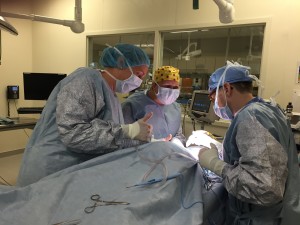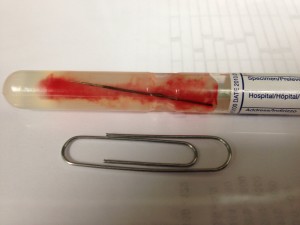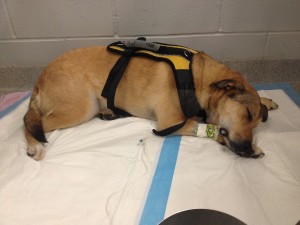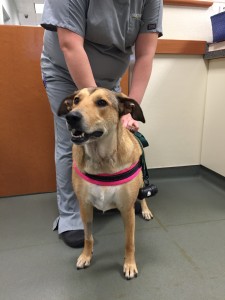-
Recent Posts
Archives
- October 2022
- August 2022
- May 2022
- March 2022
- January 2022
- December 2021
- September 2021
- July 2021
- June 2021
- May 2021
- April 2021
- February 2021
- January 2021
- November 2020
- October 2020
- September 2020
- June 2020
- April 2020
- March 2020
- February 2020
- January 2020
- December 2019
- November 2019
- October 2019
- September 2019
- June 2019
- March 2019
- February 2019
- January 2019
- December 2018
- November 2018
- October 2018
- August 2018
- July 2018
- June 2018
- May 2018
- April 2018
- March 2018
- February 2018
- January 2018
- December 2017
- November 2017
- October 2017
- September 2017
- August 2017
- July 2017
- June 2017
- May 2017
- April 2017
- March 2017
- February 2017
- January 2017
- December 2016
- November 2016
- August 2016
- July 2016
- June 2016
- May 2016
- April 2016
- March 2016
- February 2016
- January 2016
- December 2015
- November 2015
- October 2015
- September 2015
- August 2015
- July 2015
- June 2015
- May 2015
- April 2015
- March 2015
- December 2014
- June 2014
- May 2014
- April 2014
- November 2013
- September 2013
- August 2013
- July 2013
- June 2013
- May 2013
- March 2013
- January 2013
- November 2012
- October 2012
- July 2012
- December 2011
- November 2011
- October 2011
- September 2011
- August 2011
- July 2011
- June 2011
- May 2011
- April 2011
- March 2011
- February 2011
- January 2011
- December 2010
- November 2010
Categories
Like a Needle in a Haystack
Bella is a 2-year-old, mixed-breed dog who presented to the emergency service at NorthStar VETS on a referral for swelling in her neck.
She initially presented to her family veterinarian two weeks prior when the swelling was first noticed by her owner. She was treated with antibiotics and the swelling improved, however once the antibiotics were stopped, the swelling returned. Bella seemed to be uncomfortable and have excessive drooling, which promoted her owner to bring her back in for evaluation. Her family veterinarian took X-rays of her neck where the swelling was most prominent. The X-rays revealed evidence of a needle foreign body located deep within the structures of the cervical neck.
Her owner is unsure of where she could have obtained the needle from and was very surprised to hear that this was the cause of Bella’s clinical problem.
 On initial presentation to NorthStar VETS, Bella was seen by our emergency service. Point-of-care bloodwork was taken to make sure Bella was safe for general anesthesia. She was placed under general anesthesia and her neck was clipped to look for evidence of a point of penetration. No wounds or scabs were found. An oral exam was performed and a small hole was noted in the soft palate inside her mouth. The admitting ER doctor, the Dentist and the Surgeons explored this hole, however the needle could not be reached. Given the difficult location of the needle, Bella was taken for a CT scan to obtain a 3-dimensional image. The image helped determine the exact location of the needle by serving as a road map to figure out the best surgical approach possible to retrieve the needle without causing damage to the vital structures of the cervical neck.
On initial presentation to NorthStar VETS, Bella was seen by our emergency service. Point-of-care bloodwork was taken to make sure Bella was safe for general anesthesia. She was placed under general anesthesia and her neck was clipped to look for evidence of a point of penetration. No wounds or scabs were found. An oral exam was performed and a small hole was noted in the soft palate inside her mouth. The admitting ER doctor, the Dentist and the Surgeons explored this hole, however the needle could not be reached. Given the difficult location of the needle, Bella was taken for a CT scan to obtain a 3-dimensional image. The image helped determine the exact location of the needle by serving as a road map to figure out the best surgical approach possible to retrieve the needle without causing damage to the vital structures of the cervical neck.
The CT scan was evaluated by our Radiologist and revealed a needle located at the level of the 2nd cervical vertebra. This proved to be a difficult location to reach without an extensive surgical approach. Therefore Bella was recovered from anesthesia and a surgical team began prepping for surgery the following day. See the 3-D CT scan image of Bella’s neck.
 Bella was given pain medications and antibiotics overnight. She rested comfortably and was ready for her big surgery the following morning. The surgical team consisted of a Surgeon, Neurologist and a Radiologist. Our team worked together to obtain access to this difficult location from the front of her neck under her chin. The needle was buried deep in the muscles and could not readily be identified and therefore our Radiologist used a sterile ultrasound probe to identify the needle. Working together as a team, we were able to make an ultrasound-guided incision into the muscle right over the needle, identify it, and extract it with precision to avoid damage to other structures in the neck.
Bella was given pain medications and antibiotics overnight. She rested comfortably and was ready for her big surgery the following morning. The surgical team consisted of a Surgeon, Neurologist and a Radiologist. Our team worked together to obtain access to this difficult location from the front of her neck under her chin. The needle was buried deep in the muscles and could not readily be identified and therefore our Radiologist used a sterile ultrasound probe to identify the needle. Working together as a team, we were able to make an ultrasound-guided incision into the muscle right over the needle, identify it, and extract it with precision to avoid damage to other structures in the neck.
 Bella recovered well from surgery in our ICU where she was monitored. She did great overnight and was eating, comfortable, and happy the following day. She was discharged into the care of her owner the evening after surgery with antibiotics, pain medications and instructions for warm packing her neck to help the swelling resolve in a timely manner.
Bella recovered well from surgery in our ICU where she was monitored. She did great overnight and was eating, comfortable, and happy the following day. She was discharged into the care of her owner the evening after surgery with antibiotics, pain medications and instructions for warm packing her neck to help the swelling resolve in a timely manner.
 Bella had a recheck two weeks after her surgery to have a physical exam and her sutures removed. We are pleased to report that she is doing great! The swelling in her neck has completely resolved and she is back to her spunky, energetic self. Bella will stay on her antibiotics for another 4 weeks and hopefully will never look back on her run-in with the sewing needle.
Bella had a recheck two weeks after her surgery to have a physical exam and her sutures removed. We are pleased to report that she is doing great! The swelling in her neck has completely resolved and she is back to her spunky, energetic self. Bella will stay on her antibiotics for another 4 weeks and hopefully will never look back on her run-in with the sewing needle.
Penetrating foreign bodies can be challenging cases to diagnose and treat. Most penetrating foreign bodies are very small and difficult to retrieve surgically. As Surgeons, we use the analogy that finding a foreign body at surgery can be similar to finding a needle in a haystack, sometimes impossible. In Bella’s case we were lucky that the offending foreign body could be located with imaging due to its metallic composition. Once we identified and located Bella’s problem, the doctors at NorthStar VETS worked quickly to define a plan of action to retrieve the needle that was located in a very difficult location to access. We assembled a team of doctors each of whom played a part in giving Bella the best chance possible for a positive outcome with minimal surgical trauma. This along with Bella’s strong spirit helped to result in her full recovery.

Heather Knapp-Hoch, DVM, MS, DACVS
Originally from New Jersey, Dr. Knapp-Hoch is excited to return home and join the NorthStar VETS surgical team. Dr. Knapp-Hoch earned her Bachelor of Science in biology from Long Island University in 2001. She then traveled across the US to obtain a Masters degree in genetics and cell and molecular biology from Washington State University where she also obtained her Doctorate of Veterinary Medicine in 2007. Dr. Knapp-Hoch then completed a small animal rotating internship at Cornell University in 2008. Following her internship she completed a three-year surgical residency at Cornell University in 2011. She obtained board certification in 2012 and practiced as a small animal clinical instructor at Cornell University from 2011-2014.
Dr. Knapp-Hoch’s special areas of interest include surgical oncology and minimally invasive surgery including laser ablation of ectopic ureters. She is proficient in advanced wound management and has a special interest in the use of negative pressure wound therapy (NPWT) to treat difficult surgical and traumatic wounds. She is trained in both the tibial plateau leveling osteotomy (TPLO) and the tibial tuberosity advancement (TTA) surgical procedures for cranial cruciate ligament disease.
The information presented on this web site is not intended to take the place of your family veterinarian’s advice and is not intended to diagnose, treat, cure or prevent any disease. Discuss this information with your own veterinarian to determine what is right for your pet. All information is intended for your general knowledge only and is not a substitute for medical advice or treatment for specific medical conditions. We can not and do not give you medical advice via this blog. The information contained in this online site and emails is presented in summary form only and intended to provide broad understanding and knowledge. The information should not be considered complete and should not be used in place of a visit, call, consultation or advice of your veterinarian. We do not recommend the self-management of your pet’s health problems.
This entry was posted in Pets, Veterinary Medicine and tagged Dr. Heather Knapp-Hoch, Dr. Matthew Gutman, Dr. Melissa Logan, NorthStar VETS. Bookmark the permalink.





Leave a Reply